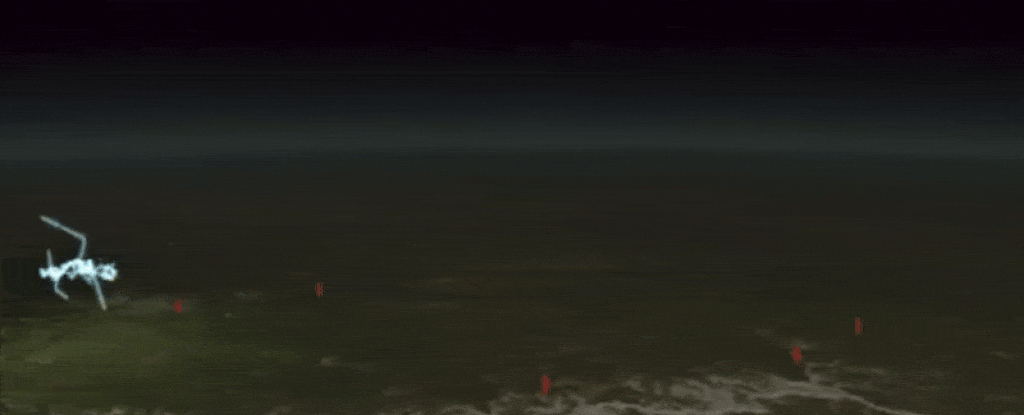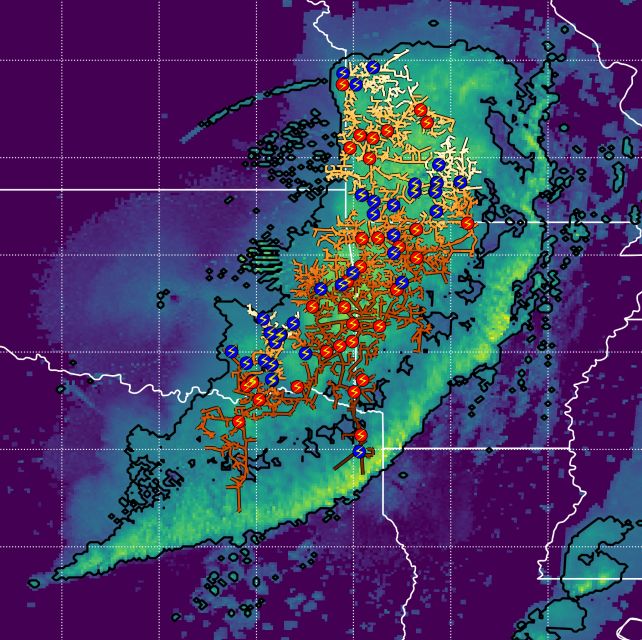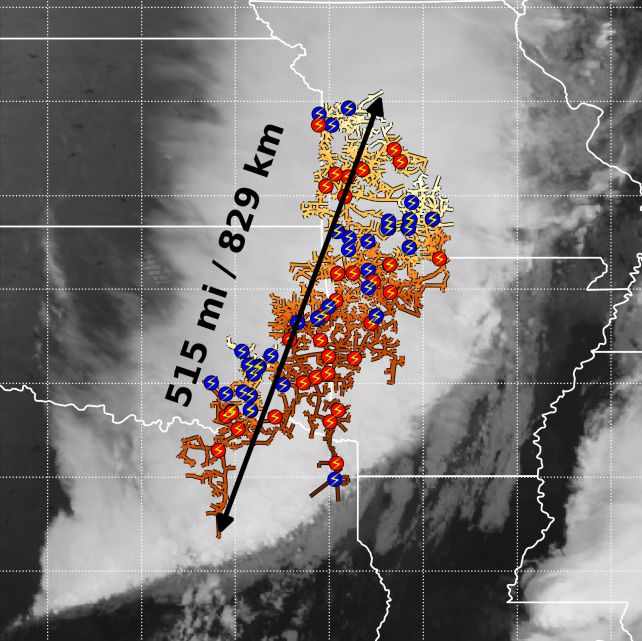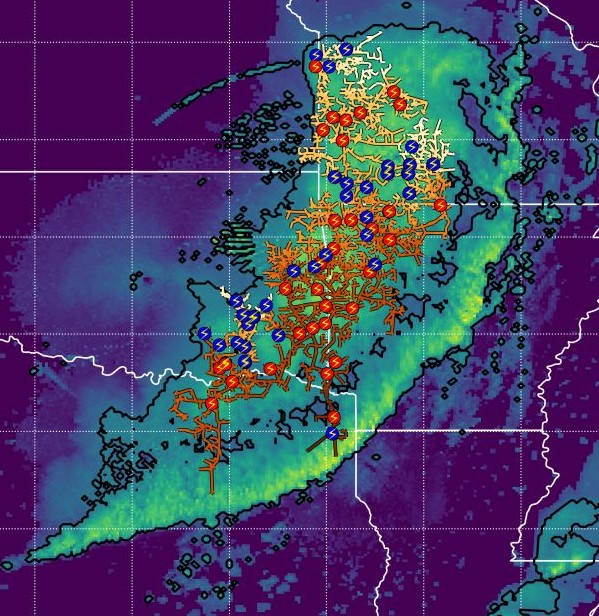 |
|
(Sarayut Thaneerat/Getty Images)
|
Full Story: ScienceAlert (Australia) (7/31)
World’s Longest Lightning Strike Crossed 515 Miles From Texas to Kansas
 Animation based on data for the world’s longest lightning flash. (Georgia Tech Research Institute)
Animation based on data for the world’s longest lightning flash. (Georgia Tech Research Institute)A bolt of lightning that arced across the sky from Texas to Kansas in the fall of 2017 has officially smashed the record for the world’s longest.
During a major thunderstorm in October 2017, the colossal crack of jagged electricity streaked across the Great Plains of North America for 829 kilometers (515 miles) – a distance that surpassed the previous record by 61 kilometers.
Lightning is one of the most breathtaking phenomena on Earth. It occurs when turbulent conditions in the atmosphere jostle particles around, rubbing them together to generate charge. Eventually, so much charge builds up that it has to go somewhere, producing a discharge of millions of volts across the sky.

GOES-16 was launched in late 2016, and managed to record the giant storm of October 2017, but the megaflash wasn’t detected until a team led by atmospheric scientist Michael Peterson of Georgia Institute of Technology’s Severe Storms Research Center revisited the data.
Measuring a megaflash is painstaking work that involves putting together satellite and ground-based data to reconstruct the extent of the event in three dimensions. This helps determine that the megaflash is one single lightning strike, as well as measuring just how big it is. Because the strike is often at least partially obscured by cloud, such megaflashes are easy to miss.

It’s no coincidence that both megaflashes occurred over the Great Plains. This region is a major hotspot for the mesoscale convective system thunderstorms that are most conducive to megaflashes. So, if the record is to be broken in the future – which is a strong possibility – it could come from the same region.
“Over time, as the data record continues to expand, we will be able to observe even the rarest types of extreme lightning on Earth and investigate the broad impacts of lightning on society,” Peterson concludes.
The result has been published in the Bulletin of the American Meteorological Society.




